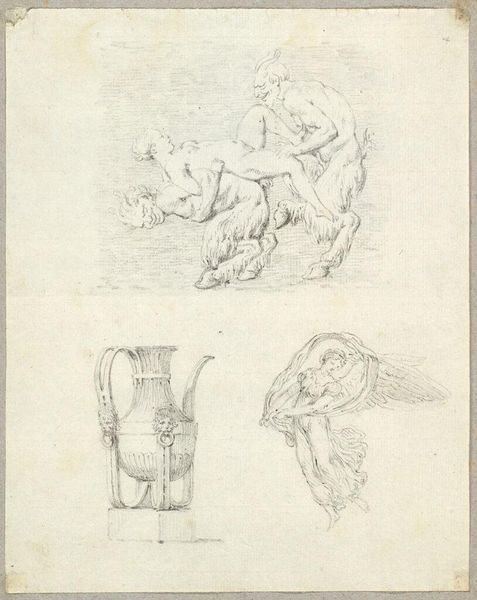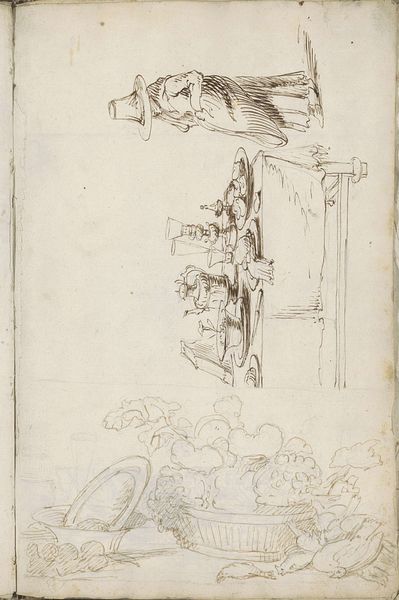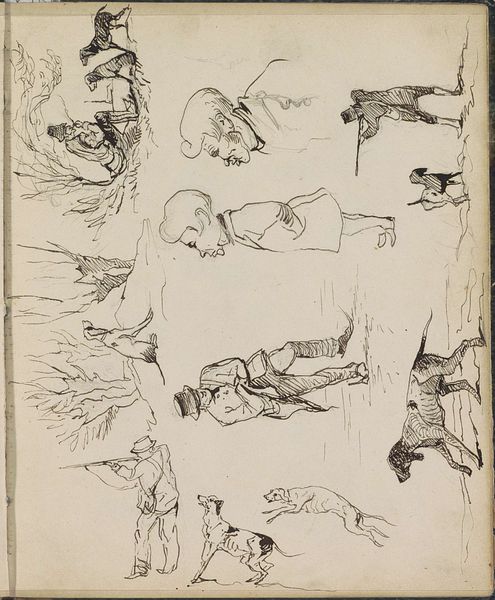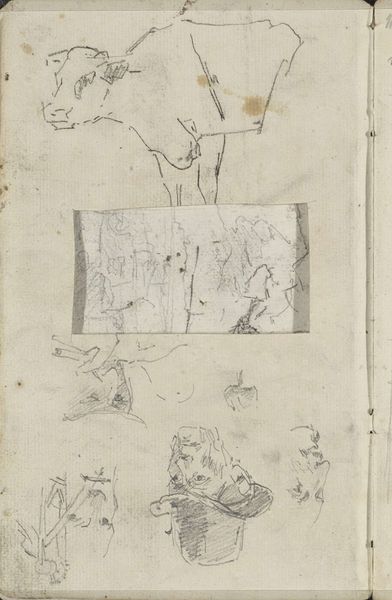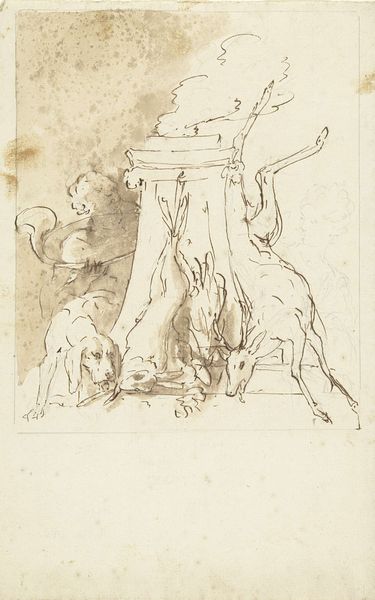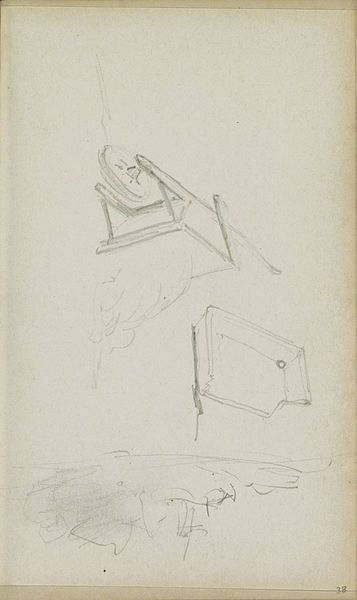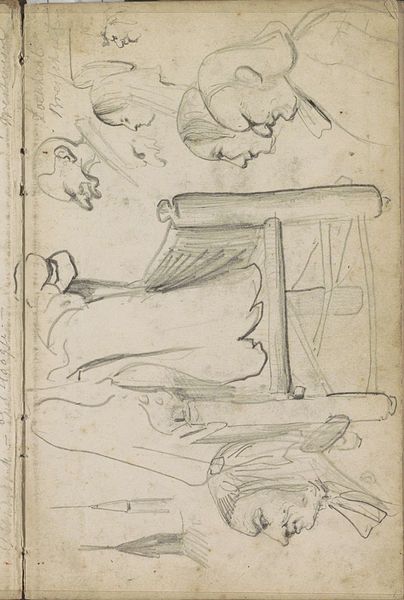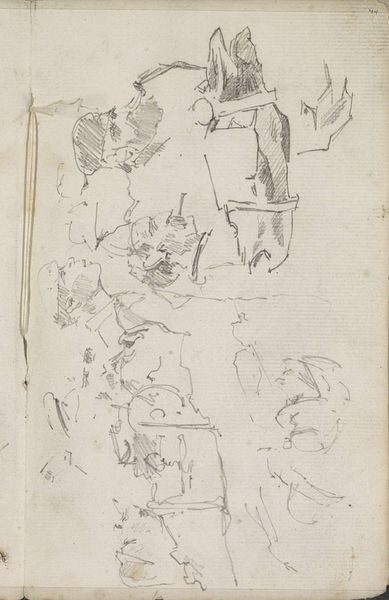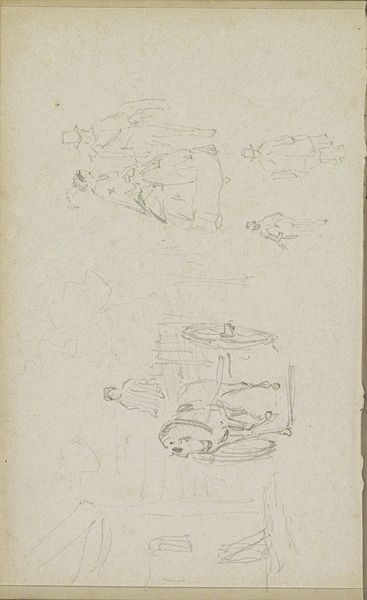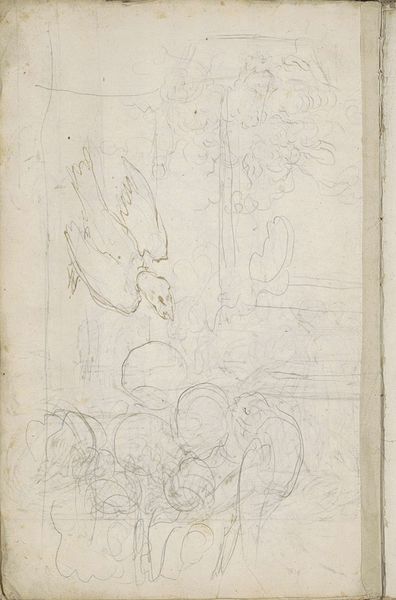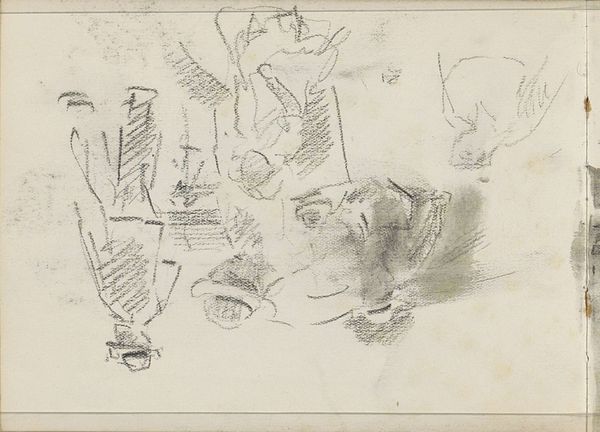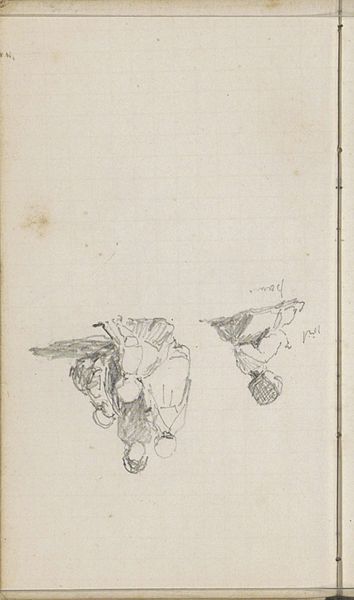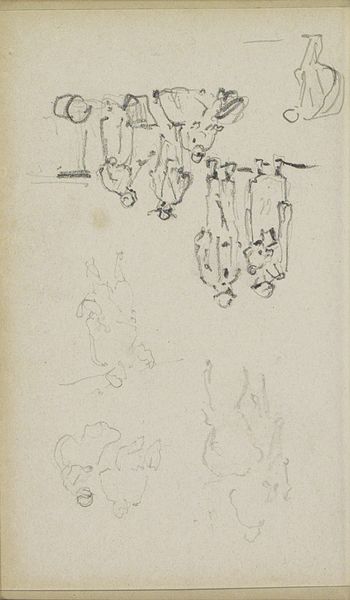
drawing, paper, ink
#
portrait
#
drawing
#
light pencil work
#
pen sketch
#
landscape
#
paper
#
personal sketchbook
#
ink
#
idea generation sketch
#
sketchwork
#
ink drawing experimentation
#
pen-ink sketch
#
sketchbook drawing
#
storyboard and sketchbook work
#
sketchbook art
#
realism
Copyright: Rijks Museum: Open Domain
Curator: Looking at this page, which the Rijksmuseum titles “Mannenkoppen, man met een stok en een hert,” by Johannes Tavenraat, dating roughly from 1839 to 1872, what immediately captures your attention? Editor: The sketchiness, without a doubt. It has the intimate feel of a private notebook, a glimpse into the artist’s fleeting ideas. The multiple faces especially give me a sense of a psychological study. Curator: Indeed. These types of sketches provide insights into 19th-century artistic practices, especially ideas around realism and portraiture, emerging alongside rapid social and political change in the Netherlands. Artists began seeking to depict the world and people more accurately. Editor: And I think this page reveals the underpinnings of that shift, the artist working through different types, maybe considering the emotional character conveyed through specific facial features. Are they types recognizable from folklore perhaps, or contemporary archetypes of the time? Curator: Potentially. Beyond folklore, one could examine Tavenraat’s participation in the broader visual culture. Consider how prints, political cartoons, and increasingly accessible portrait photography were circulating and influencing artists’ perceptions of the human form. It's intriguing that alongside those human heads, we see a schematic of an architectural form—perhaps even a stage—and the figure of a stag, a symbol with centuries of associations. Editor: The stag brings to mind ideas of the hunt, nobility, the pastoral tradition. It's striking how he juxtaposes those weighty symbols with the raw, immediate act of sketching faces. One head is clearly wearing a pointed hat or helmet, calling up specific historical periods or even literary characters, hinting at the layered, symbolic nature of human representation. Curator: These quick notations perhaps record Tavenraat’s effort to synthesize and explore established modes of representation, while testing new methods for capturing something truthful. The academy clearly prized this balance. Editor: Yes, that dance between established visual tropes and something genuinely observed—a very generative tension. Seeing it here in this unpolished form, we are closer to understanding the roots of later depictions. Curator: Absolutely. It humanizes and demystifies artistic production. Thank you for sharing your symbolic insight into these drawings; it really opens them up. Editor: My pleasure. This sketch feels like a portal into the past, not just of art history, but the cultural landscape of the nineteenth century.
Comments
No comments
Be the first to comment and join the conversation on the ultimate creative platform.
